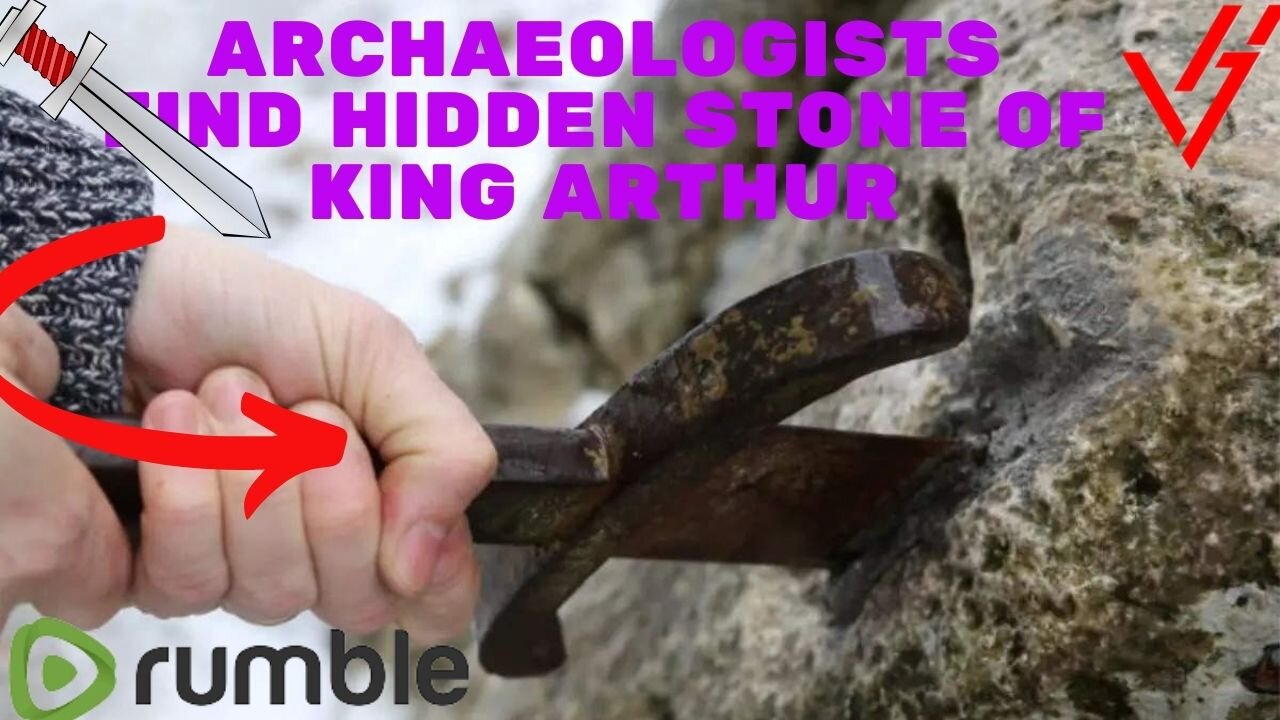Premium Only Content

🏰 Archaeologists Find Hidden Stone of King Arthur 🏥
Archaeologists Find Hidden Stone of King Arthur
For the first time ever, archaeologists have excavated sites near Arthur’s Stone, shedding new light on the origins of the mysterious Neolithic structure, which dates to around 3700 BCE—a full millennium before the construction of Stonehenge (2500 BCE). Based on the new findings, the famed rock tomb in Herefordshire, England now seems to have been part of a region-wide community of shared burial rituals.
According to the archaeologists from the University of Manchester and Cardiff, the hulking Stone Age tomb can now be understood in relation to the 6,000-year-old “halls of the dead” discovered nearby in 2013, which were used to store bodies before they were moved into individual chambered tombs. The researchers discovered the burned remains of the halls, which they said were intentionally set alight, and later incorporated into burial mounds.
Based on the new excavation’s findings, Arthur’s Stone was actually built in two distinct phases of construction. In its first incarnation, it was based on a large mound of stacked earth pointing southwest and surrounded by wooden posts, which ultimately decayed—similar in form to what is known of the “halls of the dead.” Later, it was rebuilt with larger post pillars, two rock chambers, and an upright stone facing southeast, according to Current Archaeology.
Professor Julian Thomas, part of both the new excavation and the earlier finds, explained the significance of the new findings on the University of Manchester website. Because of the similarities between the previously hidden first phase of Arthur’s Stone and the recently identified “houses of the dead,” “the block of upland between the Golden Valley and the Wye Valley is now becoming revealed as hosting an integrated Neolithic ceremonial landscape.”
The excavation was part of the Beneath Hay Bluff Project, which is dedicated to investigating Neolithic structures in southwest Hereforshire.
The 2013 discovery yielded artifacts similar to others found in Yorkshire dating from 2600 BC. This led scholars to believe that the site remained an important venue for ceremonies 1,000 years after the halls were initially built, strongly suggesting links between communities in Hereforshire and East Yorkshire over many generations.
Arthur’s Stone, a UNESCO-listed heritage site, served as inspiration for the “stone table” in C.S. Lewis’s fantasy book The Lion, the Witch, and the Wardrobe, where it was imagined as a table built by lion king Aslan’s father. Though Lewis’s version consists of a large slab of rock supported by four smaller rock pillars, the real-life structure is actually composed of nine standing stones supporting a 25-ton hulking quartz capstone.
Credits: Carolina Goldstein Search : Vitor Hugo Lizardi Leonardi
🙌👉Hello friends, If you liked it don't forget to leave your like and subscribe to the channel strengthen our work, it is very importantly, to widen the channel. I'll tell you, thank you.
🙌👉SHOW- The channel was created to promote texts and sounds for us to think a littleabout life and as we can be very happy with what little we have, did you like it, leave your LIKE, your comment as soon as possible we will reply, thank you. If any writer,record label, artist or photographer has a problem with any music upload or video, please contact us and we will remove your work immediately. Thank you!
🔴🔔 We strive to find the best and most enjoyable text and music for you! We hope to make your days more beautiful with texts and music that make you think and music to relax! Text, love and music. I'm also a writer, I'm working on this project!
🔴🔔 If you have any copyright issues or questions, please don't let me know. report, please take the time to contact us via email and we will respond within 48 hours ☎🔔 vitorleonardi99@gmail.com
#reiarthur, #king, #archaeologist, #dig. #light, #discovery, #teacher, #study, #construction,
-
 LIVE
LIVE
iCheapshot
3 hours agoCheap Plays Warzone Again? What!?
76 watching -
 2:30:14
2:30:14
PandaSub2000
5 hours agoCHAOS & FURY | Episode 27: Attack Of The Cranks (Edited Replay)
4.78K -
 LIVE
LIVE
Spartan
1 hour agoSpartan - Pro Halo Player for OMiT | Ranked for a little bit
21 watching -
 15:15
15:15
Adam Does Movies
1 day ago $3.00 earnedHappy Gilmore 2 - Movie Review
18.7K14 -
 3:10:16
3:10:16
Toolman Tim
4 hours agoDOOM: The Dark Ages ALMOST DONE! | The Gaming Thinktank
6.07K -
 LIVE
LIVE
SkrimpNGritZ
3 hours agoSkrimpNGritz Off the Grid Live
71 watching -
 16:29
16:29
Mrgunsngear
1 day ago $0.72 earnedGirsan Witness 2311 Match X - Staccato XC On A Budget But Does It Work?
15K4 -
 14:54
14:54
Tundra Tactical
3 hours agoTundy's SIG MEME Review 2: The Reload!!!
12.6K3 -
 LIVE
LIVE
Baked Linguini's Home Channel
2 hours agoSpace Marines Co-Op Action
16 watching -
 3:26:30
3:26:30
YoungStreetz
6 hours agoStreetz Lazy Sundazy | GDZoG
1.42K